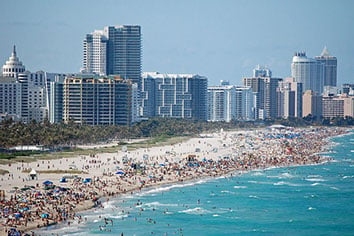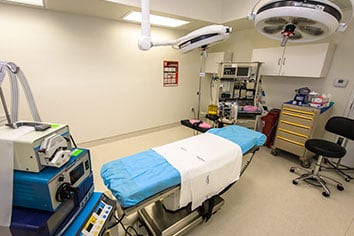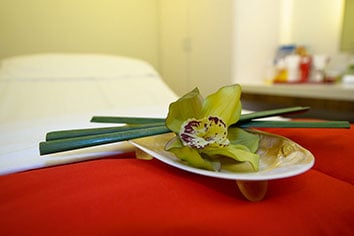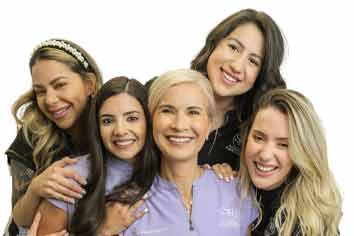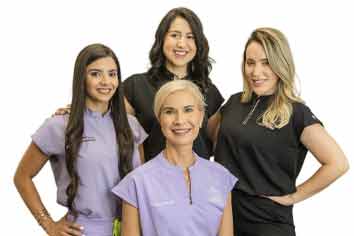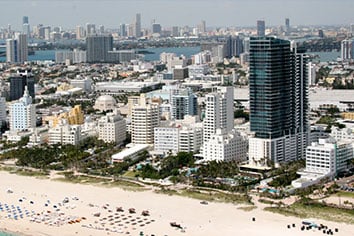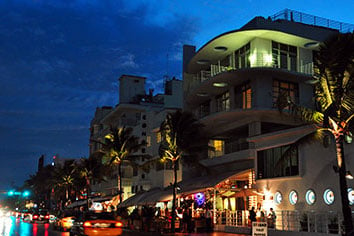Conveniently located to serve the areas of Miami and South Florida
A mastectomy is a surgical procedure that removes the entire breast. It is performed on women who are positive for the breast cancer gene, BRCA; have pre-cancerous lesions or cancer of the breast. This can include ductal carcinoma in situ, early or locally advanced breast cancer, inflammatory breast cancer, or recurrent cancer after a lumpectomy.
Mastectomies generally remove glandular tissue, skin, nipple, and areola. Traditional mastectomy that removes a significant amount of breast skin can result in a central prominent scar, making reconstruction challenging.
Contents
What is a Nipple Sparing Mastectomy?
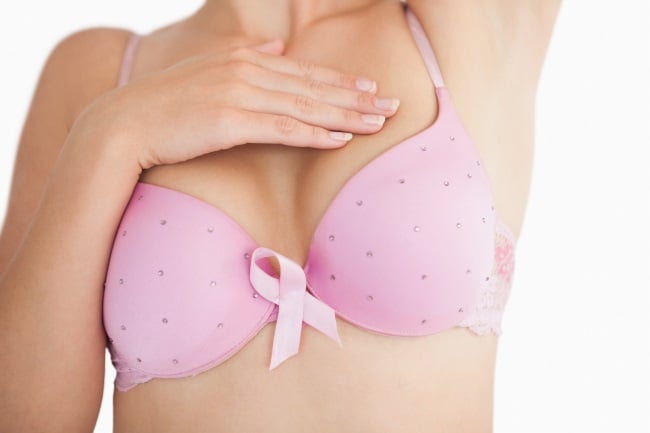
With Implants
We know that this is not an easy decision to make, so Dr. Silvia Rotemberg does everything in her power to make you feel absolutely comfortable and confident with your decision. Please feel free to contact us with any questions or concerns you may have and we will gladly answer them all.
Patients can choose to have breast implants inserted during this surgery to rebuild the shape and size of the breast. This can be done for both breasts if a double nipple sparing mastectomy has been performed. If only one breast underwent a nipple sparing mastectomy, an implant can be placed in only that breast to match the size of the other breast. Implants can also be placed in both breasts if the patient desires a larger bust, so a smaller implant will be placed in the breast that was not operated on since the breast tissue will make that breast naturally larger. A larger implant will be placed in the operated breast to make both breasts even in size. There is minimal scarring resulting from a nipple sparing mastectomy since the breast implants can majority of the time be inserted through the incision made for the glandular tissue removal.
Skin Sparing Mastectomy vs Nipple Sparing Mastectomy
Nipple Sparing Mastectomy Candidates
Patients should be non-smokers, not currently be undergoing radiation therapy, and do not have any conditions that would hinder proper healing.
Candidates for a nipple sparing mastectomy are women who are seeking prophylactic mastectomy, or who have a small disease or cancer located far enough from the nipple where it can survive. These patients also wish to restore breast shape and size with implants. The lesions or tumors cannot be aggressive to be a candidate. Women with naturally smaller breast are generally better candidates than those with larger breasts who have significant drooping. However, nipple sparing mastectomy can sometimes be performed on women with large and/or sagging breasts if Dr. Silvia Rotemberg thinks she is able to successfully reconstruct the breast with implants and provide the patient with functional and aesthetically pleasing results.
What to Expect During your Consultation
At your initial consultation with Miami’s nipple sparing mastectomy surgeon Dr. Silvia Rotemberg, she will assess your candidacy based on the size of the lesion or tumor, or the benefit of precautionary measures. She will explain the pros and cons of a nipple sparing mastectomy, and whether you should undergo a skin sparing mastectomy in conjunction, or alternatively.
If she deems you a good candidate, she will come up with a custom surgery plan to provide you with optimal results. This will include the specificities of your breast implants that are immediately placed after tissue removal. Some options you will be able to choose from are size, composition, surface, shape, and profile. Both you and Dr. Silvia Rotemberg will decide together what will look aesthetically pleasing and work well for your specific case.
Dr. Silvia Rotemberg wants to make sure this is a comfortable experience and this can only be done if all of your questions or concerns are addressed. She will be there by your side each step of the way.
You will be given a list of individualized preparations and postoperative instructions which you should fully follow. She will also explain the procedure process from start the finish in full detail so you are well informed. This includes the possibility of having to remove the nipple if during surgery she sees abnormalities she is not comfortable leaving, so it will not be a surprise after your procedure. Your safety is most important.
Please make mention of routine medications, medical history, and past surgeries pertaining or not to breast cancer. Before and after photos will be provided so you can see potential results, but results vary between each nipple sparing mastectomy case. If you have any questions at all, please do not hesitate to ask.
Procedure

All breast tissue is removed from the nipple core to help minimize the likelihood of recurrent cancer. For precaution, a sample of this will be sent to the pathologist intraoperatively while the surgery is being performed to inspect for any abnormalities or cancer. If something is found, the nipple will most likely be removed. This will be explained further during your consultation so there are no surprises.
Recovery
You will slowly and comfortably wake from the anesthesia in the recovery room with skilled and friendly nurses. Once stable, you will be transferred to an outpatient room where you will recover and rest under the supervision of the nurses and Dr. Silvia Rotemberg until you are able to return home. Swelling and bruising are normal post surgery and will subside on their own, but any discomfort can easily be controlled with prescribed medication. Most patients spend one night at the hospital.
During your recovery period, you should practice gentle stretching of the shoulder to aid range of motion. Full range should be reached in about 2 weeks. You may resume normal daily activities in about 1 week, you can drive after 3 weeks (so long as you are not taking any more pain medication), and strenuous activities can be enjoyed in 4 – 6 weeks. Sensation should slowly progress over 12 months, and scarring should fade in 12 – 24 months.
Risks
Nipple sparing mastectomies have the same risk factors as other surgical procedure. If there is any doubt intraoperatively that your nipple will not survive due to the lack of blood supply and circulation, it will have to be removed during the procedure. For further information, please schedule a consultation with nipple sparing mastectomy expert Dr. Silvia Rotemberg.
Cost
The cost of nipple sparing mastectomy varies greatly between each individual patient. In most cases, nipple sparing mastectomy and reconstruction is covered by insurance. Please check with your provider before scheduling a consultation.





